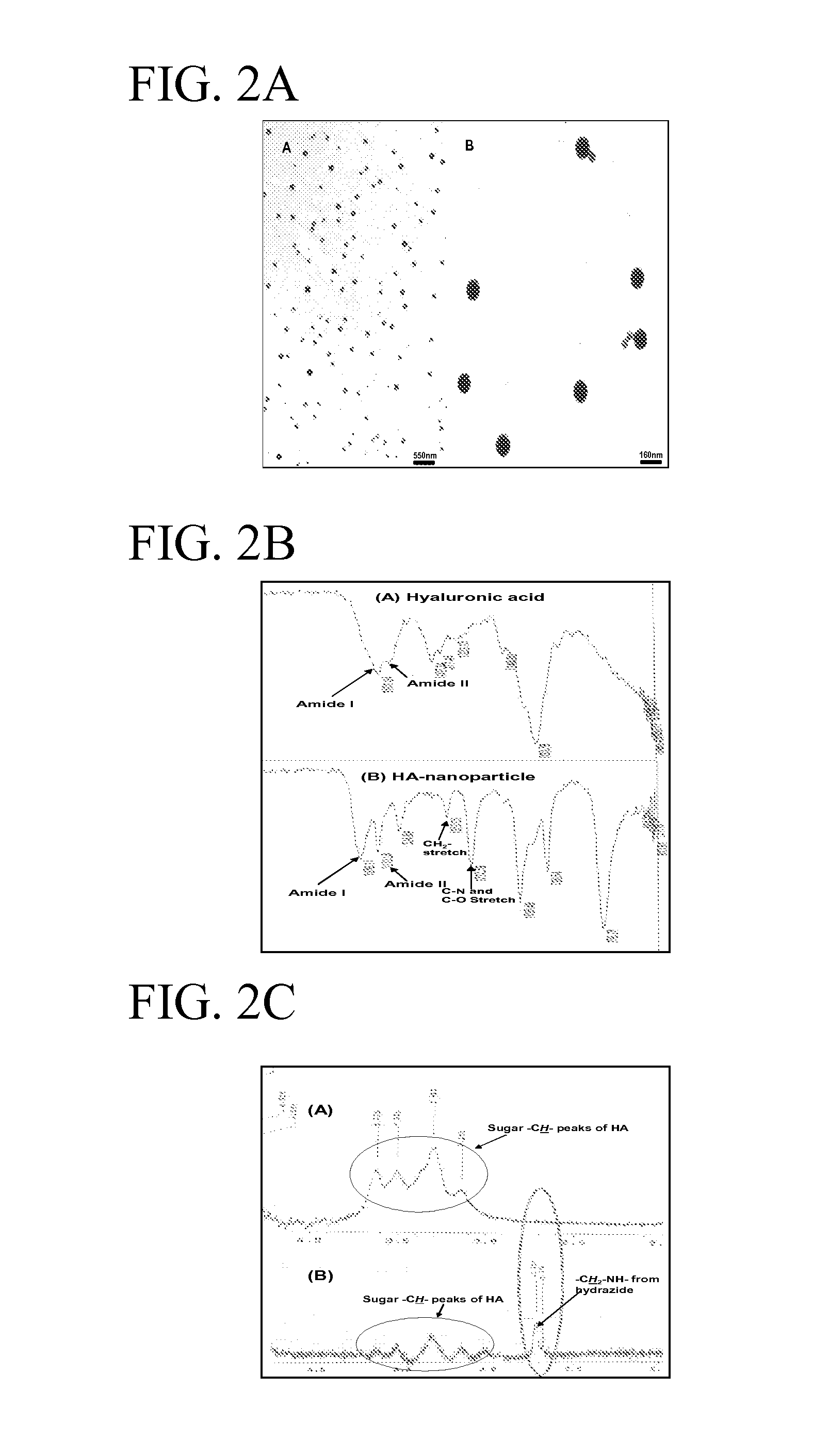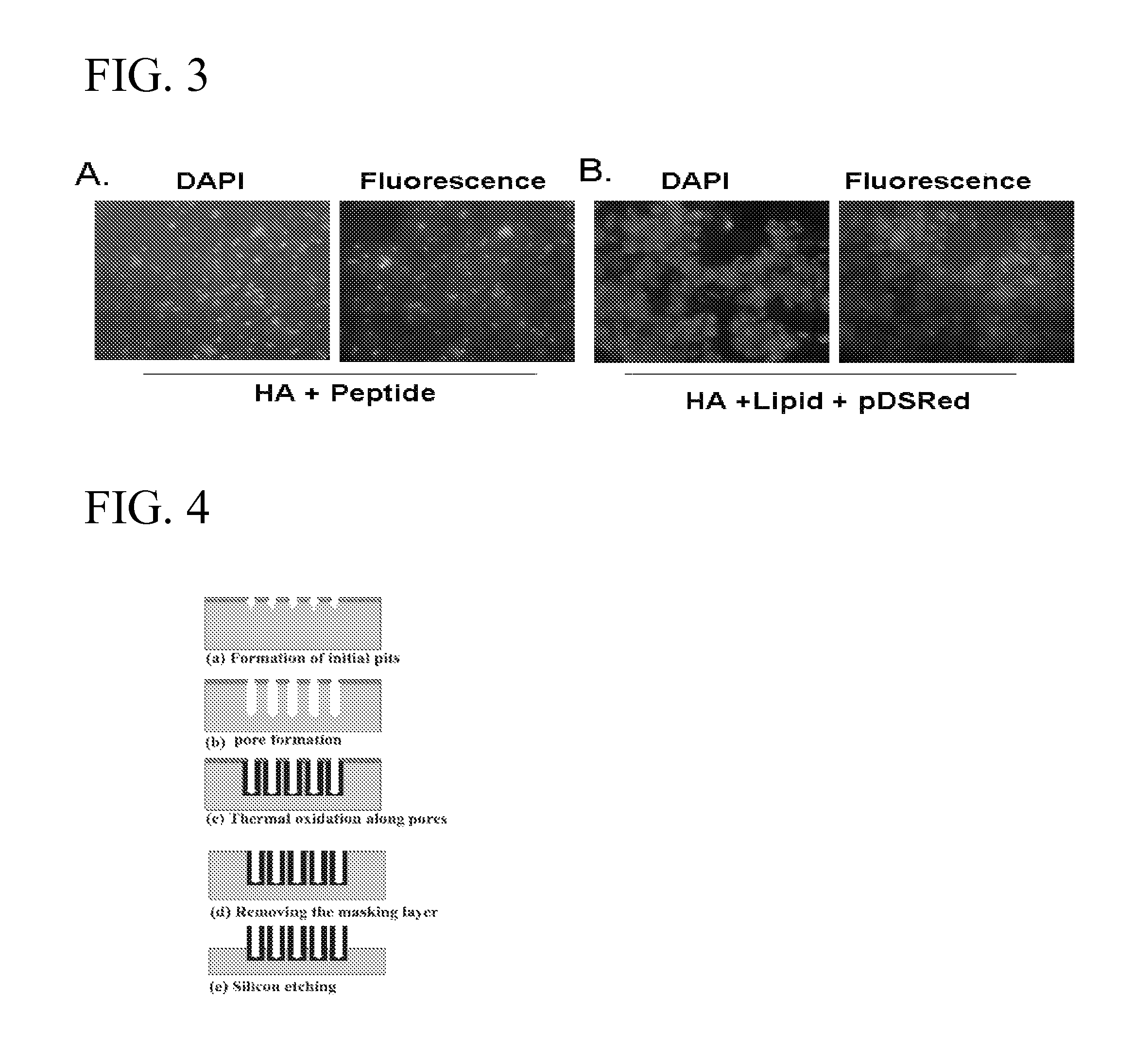Method of transdermal drug delivery
- Summary
- Abstract
- Description
- Claims
- Application Information
AI Technical Summary
Benefits of technology
Problems solved by technology
Method used
Image
Examples
example 1
Development and Characterization of Nanochitsan Particles
[0021]Water soluble low molecular weight chitosan is produced by cleaving the main chains with acidic hydrolysis, enzymatic degradation and irradiation [Ono K, Ishihara M, Ozeki Y, Deguchi H, Sato M, Saito Y, Yura H, Sato M, Kikuchi M, Kurita A, Maehara T. Surgery. 2001 November; 130(5):844-50]. Water soluble low molecular weight chitosan has some advantages, such as higher biocompatibility, solubility in neutral water and organic solvents, and ease of chemical modification. Four chitosan-based polymers in the range of 1-10 KDa, referred to as nanochitosan, have been identified in our laboratory using a proprietary method. They include NG031, NG042 and NG044. NG031 is a polymeric complex of chitosan, lipid and DNA, which provides increased efficiency for gene transfer and safety, making it specifically useful for DNA vaccines. NG042 is a carrier that was identified as a potential drug carrier based on its size (avg. size of 15...
example 2
Development and Characterization of Hyaluronic Acid Nanoparticles
[0022]The nanoparticles were prepared by self-assembling micro-emulsions techniques and were encapsulated using surfactants. Briefly, functionalized HA (Sigma) and a dihydrazide were mixed, homogenized and incubated with a crosslinking reagent in an aqueous solution. The aqueous solution was added to a non-polar organic solvent and a biodegradable surfactant to form an oil-in-water type emulsion. The pH of the reaction was lowered to pH 4.0 to allow intermolecular and intermolecular crosslinking reaction and subsequent formation of nanospheres. In preliminary studies, the HA nanoparticles were characterized by transmission electron microscope (TEM), NMR, FT-IR and atomic force microscope. As shown in FIG. 2 A-B, a TEM analysis of the HA nanoparticle complexed with FITC, gives the particle size of diameter ranging from 80-160 nm. Analysis by FT-IR confirmed cross linking reaction between the HA polymers and the outer su...
example 3
Demonstration of Peptide and DNA Delivery of HA Nanoparticles
[0024]FIG. 3 shows photographs of HEK293 cells that were incubated with HA nanoparticles encapsulating either NP-73-102 peptide-labeled with FITC (3A) or plasmid encoding pDS-Red (3B). Cells were observed under fluorescence microscope after 72 h. Cells were stained with nuclear stain DAPI to show the presence of live cells (See FIG. 3).
PUM
 Login to View More
Login to View More Abstract
Description
Claims
Application Information
 Login to View More
Login to View More - R&D
- Intellectual Property
- Life Sciences
- Materials
- Tech Scout
- Unparalleled Data Quality
- Higher Quality Content
- 60% Fewer Hallucinations
Browse by: Latest US Patents, China's latest patents, Technical Efficacy Thesaurus, Application Domain, Technology Topic, Popular Technical Reports.
© 2025 PatSnap. All rights reserved.Legal|Privacy policy|Modern Slavery Act Transparency Statement|Sitemap|About US| Contact US: help@patsnap.com



